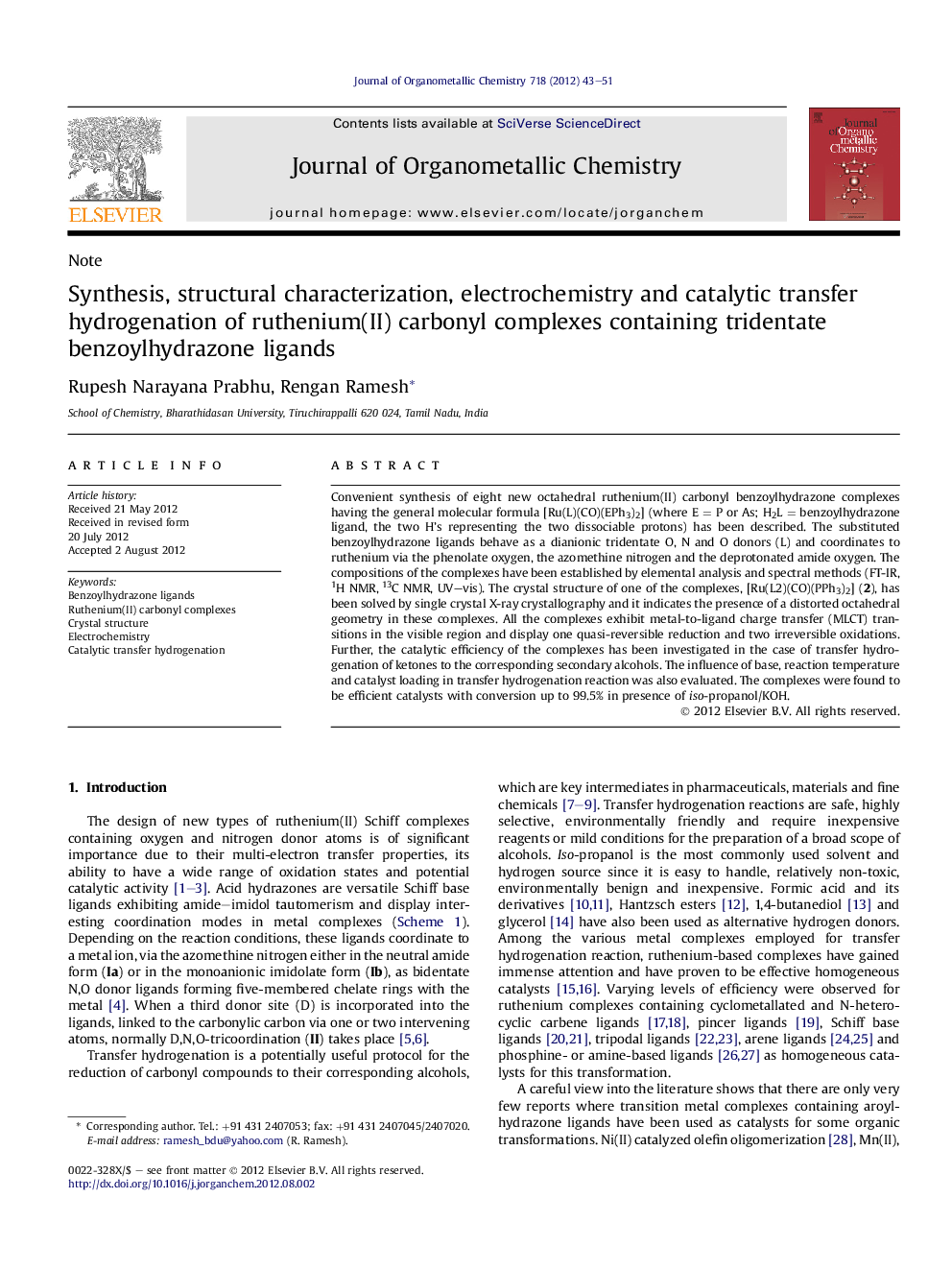| Article ID | Journal | Published Year | Pages | File Type |
|---|---|---|---|---|
| 1323056 | Journal of Organometallic Chemistry | 2012 | 9 Pages |
Convenient synthesis of eight new octahedral ruthenium(II) carbonyl benzoylhydrazone complexes having the general molecular formula [Ru(L)(CO)(EPh3)2] (where E = P or As; H2L = benzoylhydrazone ligand, the two H's representing the two dissociable protons) has been described. The substituted benzoylhydrazone ligands behave as a dianionic tridentate O, N and O donors (L) and coordinates to ruthenium via the phenolate oxygen, the azomethine nitrogen and the deprotonated amide oxygen. The compositions of the complexes have been established by elemental analysis and spectral methods (FT-IR, 1H NMR, 13C NMR, UV–vis). The crystal structure of one of the complexes, [Ru(L2)(CO)(PPh3)2] (2), has been solved by single crystal X-ray crystallography and it indicates the presence of a distorted octahedral geometry in these complexes. All the complexes exhibit metal-to-ligand charge transfer (MLCT) transitions in the visible region and display one quasi-reversible reduction and two irreversible oxidations. Further, the catalytic efficiency of the complexes has been investigated in the case of transfer hydrogenation of ketones to the corresponding secondary alcohols. The influence of base, reaction temperature and catalyst loading in transfer hydrogenation reaction was also evaluated. The complexes were found to be efficient catalysts with conversion up to 99.5% in presence of iso-propanol/KOH.
Graphical abstractRu(II) carbonyl complexes bearing tridentate benzoylhydrazone ligands were synthesized and characterized. All the complexes are redox active. The complexes act as excellent catalysts for the transfer hydrogenation of ketones to the corresponding secondary alcohols. The effect of base, reaction temperature and catalyst loading in the catalysis was also evaluated.Figure optionsDownload full-size imageDownload as PowerPoint slideHighlights► New Ru(II) benzoylhydrazone complexes were synthesized and characterized. ► The molecular structure was confirmed by single crystal X-ray crystallography. ► Catalytic transfer hydrogenation of ketones proceeded efficiently. ► The effect of bases, temperature and catalyst loading in catalysis was evaluated.
